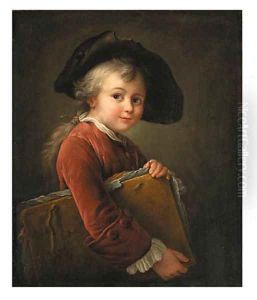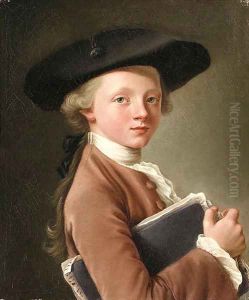Franois-Hubert Drouais Paintings
François-Hubert Drouais was a prominent French painter of the 18th century, renowned for his exceptional portraits that captured the elegance and sophistication of the French aristocracy and royal family during the Ancien Régime. Born on December 14, 1727, in Paris, France, Drouais came from a family with artistic roots; his father, Hubert Drouais, was also a painter, which provided François-Hubert with an environment conducive to nurturing his artistic talents from a young age.
Drouais's early training was under the guidance of his father, followed by studies with renowned artists such as Charles-Joseph Natoire and François Boucher, who were leading figures in the Rococo style, known for its decorative art and architecture. These influences are evident in Drouais's work, particularly in his use of soft colors, delicate brushwork, and attention to detail. Despite these early Rococo influences, Drouais's portraits are often noted for their clarity and a certain degree of neoclassical restraint, which became more pronounced in his works towards the latter part of his career.
In 1748, Drouais won the prestigious Prix de Rome, which allowed him to study at the French Academy in Rome, further honing his skills and exposing him to the classical art and culture that would influence his later works. Upon returning to Paris, he quickly established himself as one of the foremost portrait painters of his time. His ability to capture the likeness and personality of his sitters, along with his impeccable technique, made him a favorite among the nobility and the royal family. Notably, he became the official portraitist for Queen Marie-Antoinette and King Louis XV, a position that solidified his reputation and ensured a steady stream of commissions.
François-Hubert Drouais's contributions to French art cannot be overstated. Through his portraits, he provided a window into the world of 18th-century French society, capturing its fashions, ideals, and the personas of its leading figures with accuracy and elegance. Despite his death at a relatively young age of 48 on October 21, 1775, Drouais left behind a rich legacy that would influence subsequent generations of portrait painters. His works are preserved in many major museums around the world, including the Louvre in Paris and the Hermitage Museum in Saint Petersburg, attesting to his enduring appeal and significance in the history of art.

